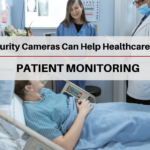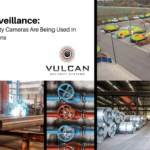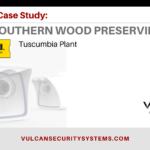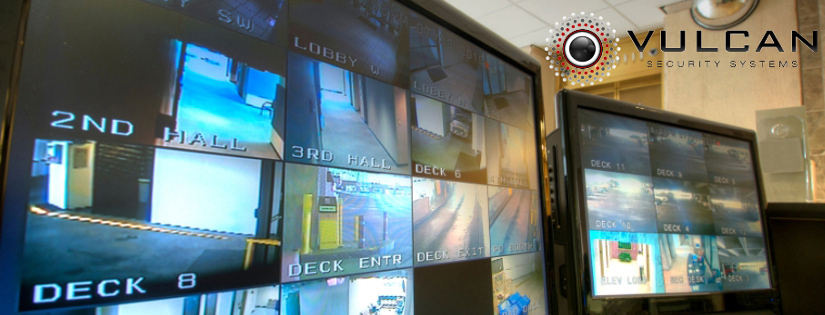A new school year is the perfect time to consider—or revisit—the many steps you can take to make your K-12 private school safer for students, faculty, staff and visitors.
Tips and Best Practices for Private School Security
In this post we offer a combination of organizational security protocols, facilities management techniques and affordable security technology you can implement in any K-12 private school regardless of size or budget.
Alabama public school systems are subject to state laws requiring emergency plans and communication systems for emergency situations. This post does not address the requirements of state laws and regulations applicable to public K-12 schools.
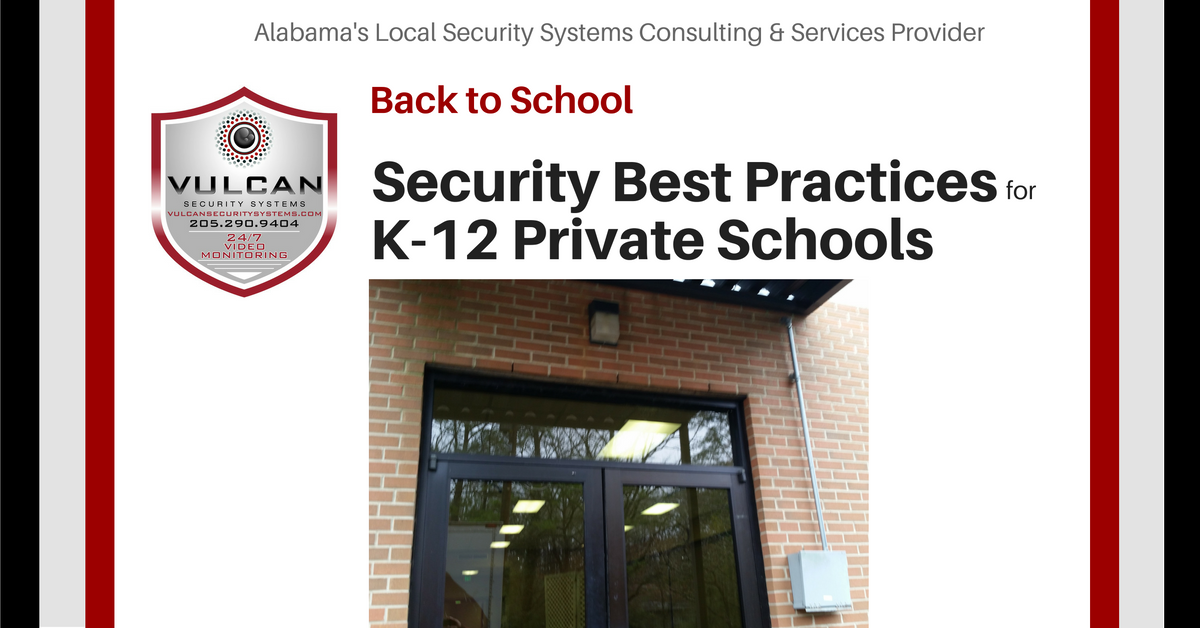
Best Practices for Securing the Exterior and Perimeter of Your Campus
Student Drop-Off Areas
Clearly designate and mark the areas where parents, carpool drivers and buses will load and unload students. Limit access to these areas to authorized vehicles through posted signs, and policies communicated to students, parents and guardians.
Campus Parking
Designate parking lots for staff, students, and visitors. If applicable the parking system should incorporate an identification system.
Visitor parking should be in an area separate from the student loading/unloading areas, with signs directing the guest to the designated location for visitor check-in.
Don’t forget to post your speed limit signs.
Secure the Perimeter
Use appropriate perimeter barriers such as fences or gates and secure them when classes are in session or the campus is closed. These barriers to unauthorized access should be clear of physical obstructions (like vegetation, large garbage dumpsters, etc.) to allow to enable continuous visual or video monitoring.
Visual surveillance (security cameras) should be used in designated areas. Areas next to buildings and playgrounds should be clear of vegetation and other opaque barriers that might shield an unauthorized visitor from detection.
Light Your Campus
Install and maintain adequate lighting in all areas, including covered walkways are other naturally dark areas. Use automatic and programmable lighting control technology, when possible, to turn on when sensors detect a physical presence. This can help prevent trip-and-fall accidents, as well as discourage trespassers and would-be burglars (or worse).
Building Access Control
Limit & Monitor Access Points
Limit the number of ways students, faculty, staff and visitors can enter the buildings on your campus. Exits are subject to fire code requirements, but you should take precautions to make sure that exits can’t be used as unofficial entrances.
Monitor all entrances and exits and lock doors when not in use.
Manage Your Keys
Manage all keys and duplicates. Create and use a key control system. Audit the key control system at least once each year and change locks if keys cannot be accounted for.
Manage Visitor Access
Have a policy in place for all nonscheduled appointments.
Use visitor signage and enforce guest check in procedures. Require all visitors to have school issued identification. Visitors and vendors should be regulated and escorted at all times.
Building Interior
The school’s front office, first aid, and visitor check-in areas should be clearly marked with signage and indicate that visitors are required to register their presence.
All stairwells and doors should be numbered and lit. Any enclosed stairway should be monitored either electronically (using surveillance cameras) or by security personnel.
Maintain and inspect or test door locks and electronic access equipment at least semiannually.
Secure and lock all critical utility systems, equipment, server rooms, roof access points, and custodial storage closets. Minimize the number of containers, trash cans, and other structures in the hallways and lobby areas.
Classroom Security
Establish classroom safe zones and protection areas. All classrooms should have access to some type of two-way communication system. Consider installing panic button technology.
Make sure that classroom doors can be locked from the inside. Store a master key in the chief administrator’s office. Lock all classrooms at the end of the school day.
All classroom areas should be visible from the classroom door. Any doors with windows should have some type of window covering that can be quickly lowered or shuttered in the event of an intruder or emergency.
Maintain adequate aisle space in any rooms with fixed seating so that exits can be rapid, if necessary.
Faculty, students, and staff should receive security information and training. We will cover security training for teachers and students in detail in a later blog.
Communication System
Establish a two way communications system between faculty, staff, administrators and security personnel, including first responders. Communication with local law enforcement should be established and maintained on a regular basis to ensure the law enforcement knows the security systems in place at your school.
Create emergency alert protocols for your school that cover the possible emergency scenarios–from weather to medical to unknown intruder to hostage situation involving weapons.
Electronic Security Equipment
Electronic security including video surveillance, burglar alarm, and access control should be installed and inspected monthly.
Other Security Measures
In future blog posts, we’ll cover topics such as:
- Designating or hiring and training your school’s security personnel
- Assembling a threat assessment team
- Security and your school’s culture
- Incident reporting procedures
- Emergency operations planning
Vulcan Security Systems provides security consultations and security system technology and monitoring to private schools, churches, daycare providers, as well as many businesses and other commercial operations, across Alabama. We are locally-owned and based in Birmingham, Alabama.
Contact us today for a free security needs consultation at your Alabama private school campus.
